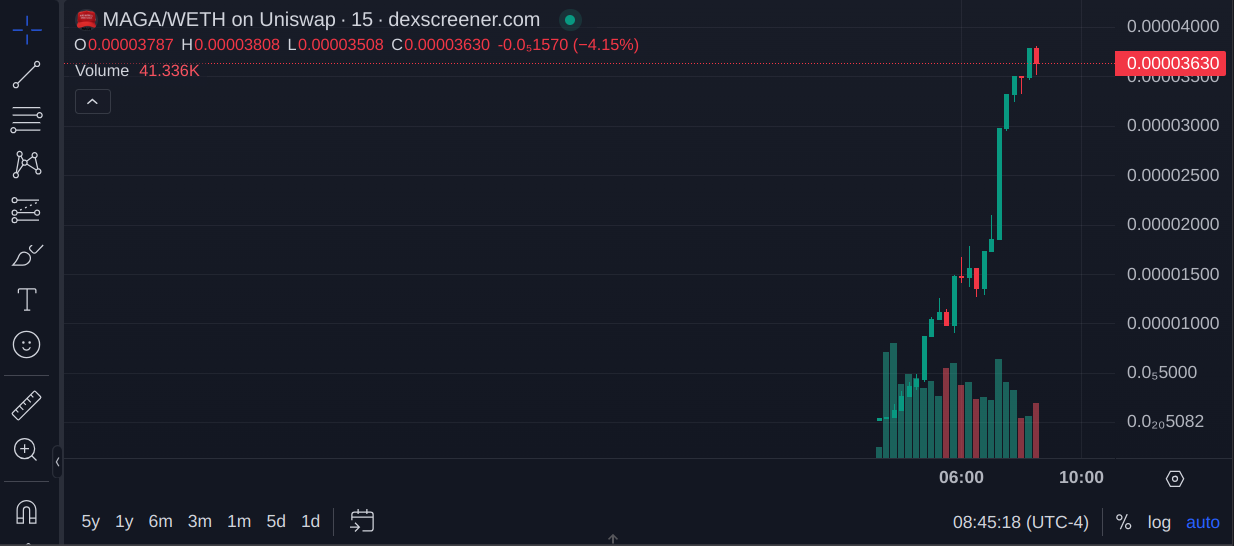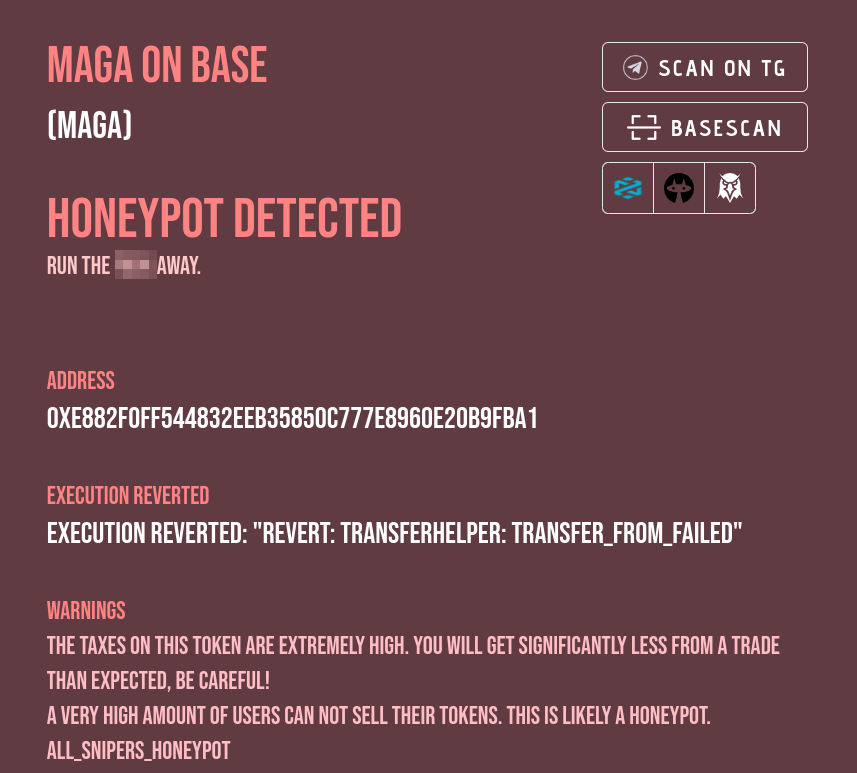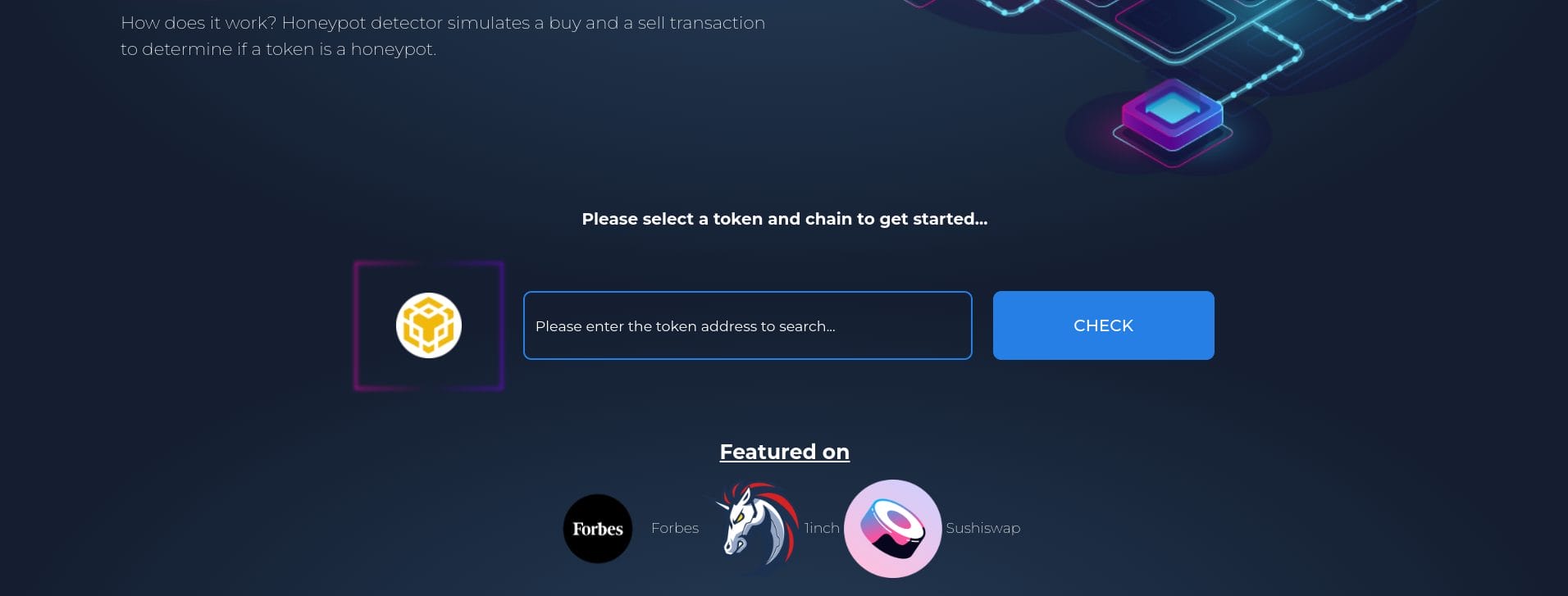What is a Honeypot Crypto Scam?
Honeypot crypto scams work in one of two ways, but in both cases, the outcome is the same: you’ll lose your money if you stumble into a honeypot. The more common honeypot crypto meaning involves tokens that can’t be sold or transferred. Another method is more hands-on and involves sending tokens to a scammer’s wallet. Ultimately, the tokens can’t be withdrawn.
In this guide, we’ll detail the two types of honeypot crypto scams and learn what to look for to avoid becoming a honeypot statistic. Let’s dig in.
Honeypot Crypto Scam Meaning
A crypto honeypot is a scam that’s tempting to crypto users but ultimately results in them losing their valuable tokens, such as ETH or SOL. The scam can work in two ways, with both methods using a flawed contract. The more commonly seen honeypot involves tokens, often meme coins, sold on decentralized exchanges. However, a function of the token blacklists buyers, making the token impossible to sell again.
According to FTC estimates, crypto scams cost investors more than $1 billion annually. However, most scams go unreported within the crypto industry.
How Do Honeypot Crypto Scams Work?
Although another type of honeypot involves sending tokens to a scammer’s wallet, we’ll focus on meme coins with a malicious function because it’s more common.
Let’s look at how crypto honeypot scams work in the steps below.
Create a Malicious Token
First, a scammer builds a token smart contract with a blacklist feature. This allows the contract creator to blacklist wallet addresses that buy the token. This process can be automated through smart contracts, and a whitelist function can allow for selling by specified addresses.
Another common tactic involves a high tax on token sales. The token creator earns the sell tax.
Launch The Token on a Decentralized Exchange
Next, the scammer launches the token on a decentralized exchange (DEX). Sites like Dexscreener and Dextools are popular ways to shop for meme coins with liquidity on decentralized exchanges. That’s where honeypot tokens are most often found by unsuspecting victims.
Run DEX Ads or Promote Via Social Media
To attract initial buyers, the scammers may run ads or shill the new coin on social media platforms or Telegram. Often, there may be a simple website, a fresh X account, and a Telegram group to make the coin look legitimate. The Telegram group and Twitter account disappear after the scam is complete.
Trigger Token Function
As buyers swap ETH (assuming an ETH-based platform) for the token, their wallet address is logged and blacklisted by the contract. Whitelisted addresses may sell, meaning the honeypot creator or team may be able to sell tokens into the liquidity pool. This makes trading look more natural, with occasional pullbacks on a bullish chart. Without this, the chart goes straight up.

The bullish chart is the bait. Based on the chart, traders want in for the next leg up on what looks like a moonshot.
Dump Tokens Into Liquidity Pool
DEX tokens use a liquidity pool, which allows traders to swap ETH for the other token in the pool. The market cap grows as token buyers swap ETH for tokens, filling the liquidity pool with more ETH. However, the scammers are on a timeline. Auditing tools like GO+ Security, Quick Intel, and Token Sniffer scan token contracts. At some point, the token will be flagged as a honeypot.
The scammers then sell their token stash into the liquidity pool, draining the pool. Another possibility is to simply close the liquidity pool and take out the ETH. Many traders are savvy to this, though, so scammers may lock or burn the liquidity to make the token look legitimate.
The result is the same. The scam tokens are worthless, and the ETH is gone.
Note: In the other type of honeypot scam, a scammer gives the target the private keys to a wallet with miscellaneous (junk) tokens, pretending to be a new user who needs gas money to swap. The target sends a small amount of ETH from their own wallet to the wallet, thinking they can then transfer the tokens themselves. However, the ETH is quickly swept from the wallet. While a small scam, repeated often enough, the ill-gotten gains add up quickly.
The Best Honeypot Crypto Checker Tools
Several crypto tools can help you detect honeypots. However, the solution isn’t foolproof. A token with blacklist or whitelist functions isn’t necessarily a honeypot. After the function is triggered, these tools can detect a honeypot.

In the example below, auditing tools show a clean token. However, the token is a honeypot, as shown above. Delays in reporting with these tools can be costly to investors. However, the community has flagged the token.

To protect yourself, you can also look for token contracts that have been renounced. A renounced contract means the developer no longer has access to the token’s functions. Again, DEX reporting tools may not be up to date.
Some tools only look for honeypot functions. Others, like Token Sniffer give you a more comprehensive view of the token. To check for a honeypot or other rug pull risks, you’ll need the token’s contract address. This can be found on sites like Dexscreener, Dextools, or Gecko Terminal. You might also find the contract address on CoinGecko or CoinMarketCap if they pull in the data for the token from DEX platforms.
Honeypot.is
Honeypot.is checks for honeypot tokens on Base, Ethereum Mainnet, and BSC. Just copy the token address from Dexscreener or a similar site and paste it into the box. The app simulates buys and sells to determine if the token is using blacklists or high taxes and transaction costs. TokenSniffer uses the Honeypot.is API as part of its more comprehensive token analysis.

De.Fi Scanner
The scanner at De.Fi can help you identify honeypot scams and evaluate the token’s overall health score. You may still need to research further. For example, De.Fi Scanner flagged some coins with burned liquidity as having no liquidity. Burned liquidity means the liquidity can never be removed, making the token safer in regard to that one metric.

Detecthoneypot.com
Like it says on the tin, Detecthoneypot.com does one thing and does it well. Paste the contract address in the box to check the token’s safety. However, a token with the correct functions can become a honeypot even if it is not one already.

TokenSniffer
Cryptocurrency projects often use TokenSniffer results in their marketing to reassure buyers. The tool offers a more comprehensive evaluation of the token and is considered the gold standard by many.

To check a token, just paste the token contract address in the box. TokenSniffer uses cached data that updates every 15 minutes.

Can You Get Out of a Honeypot Crypto?
The best way to get out of a honeypot is to not get into one. First, let’s discuss a method to test the waters.
If you’ve already done your due diligence with token scanners and checked for locked or burned liquidity, you can make a small test purchase and then sell the token. It might not hurt to do this a few times to be sure you can sell when the time comes and to evaluate slippage. High slippage could indicate a sell tax on the token.
Sadly, there’s often no way to escape a honeypot. If the scammer pulls the liquidity, it’s over. If you can’t sell due to a blacklist feature of the token, you can try sending the token to another wallet address you control. However, in many cases, this tactic won’t work either.
Research the coin thoroughly and watch for flags by the community on sites like Dexscreener. Once you’re in a honeypot, the lost money pays for your crypto trading tuition. However, if you do your research and test the waters with small buys, investing only a few dollars rather than all the funds you plan on investing, you may be able to avoid becoming a honeypot statistic.
Conclusion
Honeypots are one of the common rug-pull scams on decentralized exchanges carried out on unsuspecting users. While altcoin trading on DEX platforms can be profitable, DEX coins also bring risks and require additional research before investing. Utilize token screening tools like TokenSniffer to help guide your decisions. However, these tools aren’t perfect and may provide delayed results. It’s also wise to perform test transactions and evaluate user feedback from the community.
FAQs
Are crypto honeypots illegal?
If the perpetrators can be identified, crypto scams can be prosecuted as wire fraud offenses in many jurisdictions. However, because blockchain transactions use pseudonymous wallet addresses, finding the scammers is often impossible.
Can you sell honeypot crypto?
In most cases, there is no way to sell a honeypot crypto token. The token contract blocks sales from blacklisted wallet addresses that bought the coin.
Can you get your money back from a honeypot?
No. A honeypot is an effective scam, and there is no real recourse for its victims. Use token scanner tools and test the waters with small buy and sell transactions before investing larger amounts of money.
What are the main signs of a honeypot?
A token chart that goes straight up could indicate a honeypot. DEX platforms like Dexscreener also provide token screening tools. However, reports from these tools may not be up to date.
References
- New Analysis Finds Consumers Reported Losing More than $1 Billion in Cryptocurrency to Scams since 2021 (ftc.gov)
- Shilling Definition (CoinMarketCap)
- What is a Liquidity Pool? (gemini.com)
About Cryptonews
At Cryptonews, we aim to provide a comprehensive and objective perspective on the cryptocurrency market, empowering our readers to make informed decisions in this ever-evolving landscape.
Our editorial team, comprised of more than 20 professionals in the crypto space, works diligently to uphold the highest standards of journalism and ethics. We follow strict editorial guidelines to ensure the integrity and credibility of our content.
Whether you’re seeking breaking news, expert opinions, educational resources, or market insights, Cryptonews.com is your go-to destination for all things crypto since 2017.







 Michael Graw
Michael Graw 
 Eliman Dambell
Eliman Dambell 
